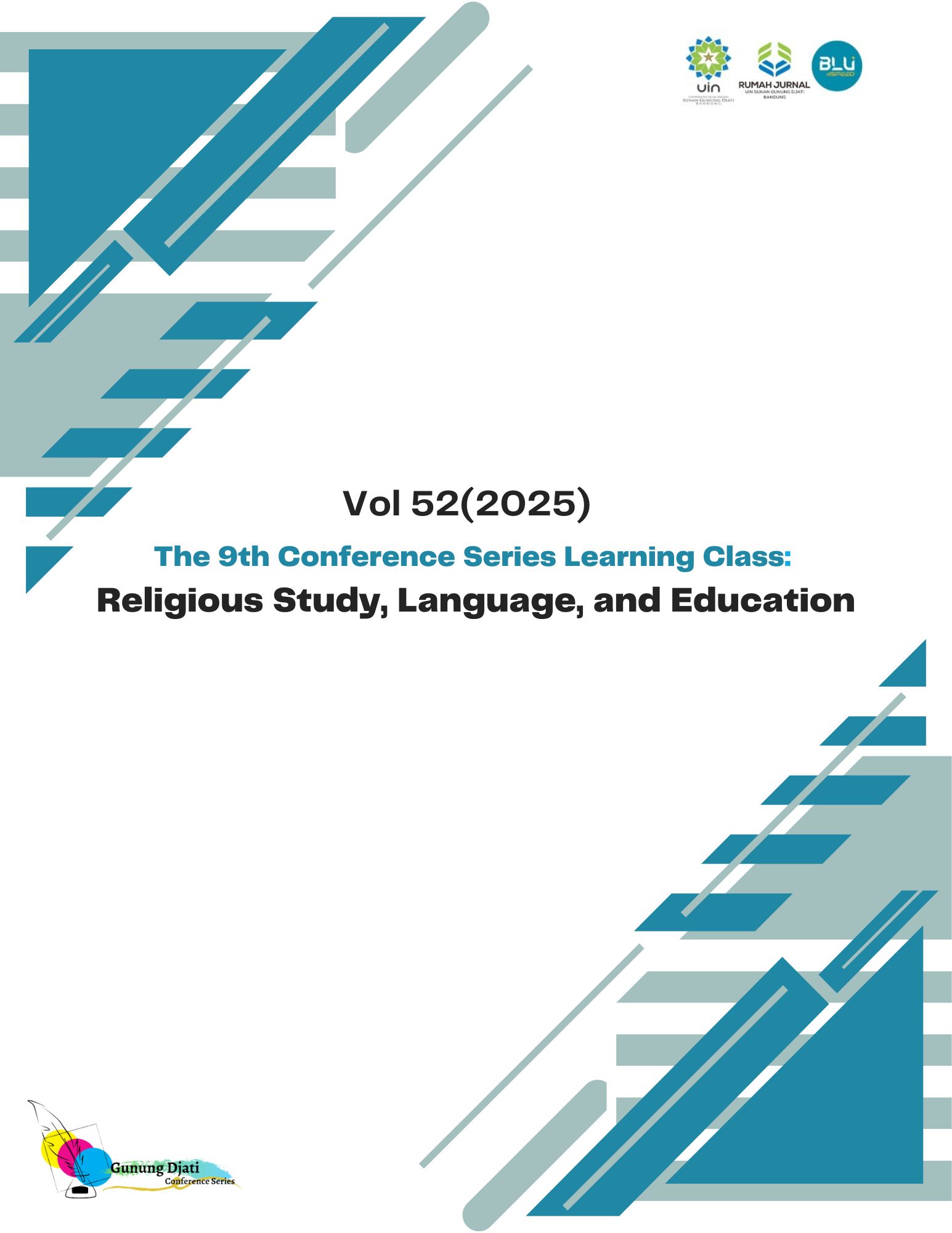Allomorph Analysis In The Book Entitled “The Practice Of English Language Teaching” By Jeremy Harmer
Keywords:
Allomorph, Phonology, Morphology, Suppletion, English language learningAbstract
This study aims to analyse allomorph in the book The Practice of English Language Teaching by Jeremy Harmer, especially in chapter 3 “Background Issues in Language Learning”. The method used is descriptive qualitative with purposive sampling technique and document analysis. The data were analysed based on the pronunciation variations of the suffix -s or -es (plural), -ed (past tense), and irregular form (suppletion). This study found that the -s or -es allomorph is devided into three pronunciation categories : /s/, /z/, and /iz/, while the -ed allomorph consist of /t/, /d/, and /id/. Suppletion is found in partial (e.g., teach à taught, bring à brought ) and full (good à better à best) forms. The most dominant allomorph category is the suffix /d/ (29,11%), followed by /z/ (24,68%), and /s/ (12,3%). This study provides insights into patterns of word form variation and English that are relevant for language learning, helping teachers and learners understand the phonological and morphological aspects of language better.
Downloads
References
Aprianti, D. (2018). Allomorph Analysis Of The Grammatical Conditioned And Suppletion In This Body Of Death Novel By Elizabeth George.
Aronoff, M., & Fudeman, K. (2022). What is morphology? John Wiley & Sons.
Baryadi, I. P. (2022). Morfologi dalam ilmu bahasa. Sanata Dharma University Press.
Bobaljik, J. D. (2015). Suppletion: Some Theoretical Implications. Annual Review of Linguistics, 1(1), 1–18. https://doi.org/10.1146/annurev-linguist-030514-125157
Bonet, E., & Harbour, D. (2012). Contextual allomorphy. The Morphology and Phonology of Exponence, 41, 195–235.
Carstairs-McCarthy, A. (2017). Introduction to English Morphology: Words and their structure. Edinburgh university press.
Etikan, I., Musa, S. A., & Alkassim, R. S. (2016). Comparison of convenience sampling and purposive sampling. American Journal of Theoretical and Applied Statistics, 5(1), 1–4.
Fromkin, V., Rodman, R., Hyams, N. M., Amberber, M., Cox, F., & Thornton, R. (2017). An Introduction to Language with Online Study Tools 12 Months. Cengage AU. h
Kennedy, G. (2014). Structure and meaning in English: A guide for teachers. Routledge. https://www.taylorfrancis.com/books/mono/10.4324/9781315836058/structure-meaning-english-graeme-kennedy
Lailul Fauziah, K. (2019). Improving the students allomorph and allophone performance by using direct feedback among the eleventh graders of MAN 1 Lampung Timur in the academic year 2018/2019
Leech, G., & Svartvik, J. (2013). A communicative grammar of English. Routledge. https://www.taylorfrancis.com/books/mono/10.4324/9781315836041/communicative-grammar-english-geoffrey-leech-jan-svartvik
Moleong, L. J. (2012). Metodologi penelitian kualitatif, Bandung. Pariwisata Pedesaan Sebagai Alternatif Pembangunan Berkelanjutan (Laporan Penelitian Hibah Bersaing Perguruan Tinggi) Yogyakarta.
Purwanto, S. (2017). Allomorph Analysis In The Three Poems By Ernest Hemingway Through Its Complementary Distribution
Siddiqi, D. (2018). Distributed Morphology. The Oxford Handbook of Morphological Theory, 143.
Yule, G. (2022). The study of language. Cambridge university press.
Downloads
Published
Issue
Section
Citation Check
License
Copyright (c) 2025 Gunung Djati Conference Series

This work is licensed under a Creative Commons Attribution 4.0 International License.



